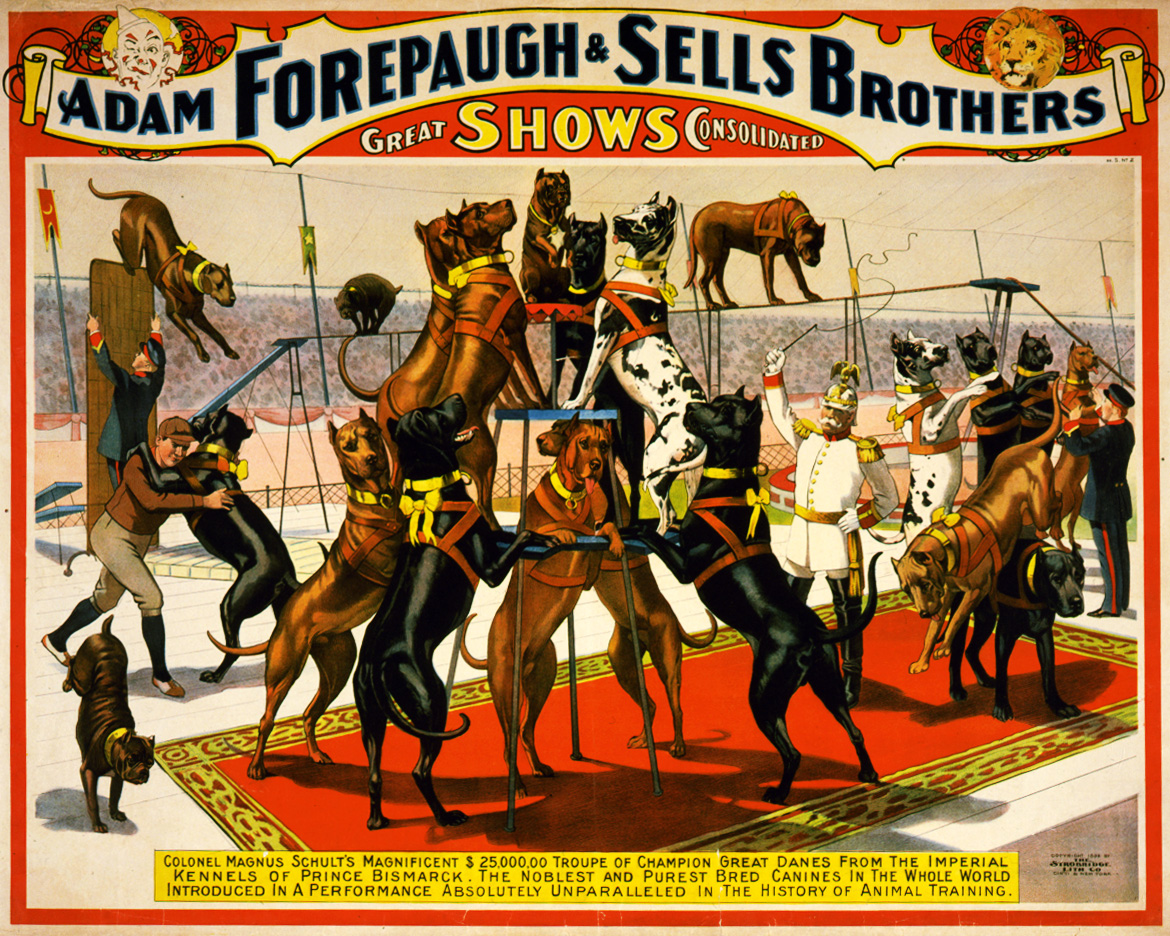|
Great British Circus
Great British Circus was a company that specialized in circus entertainment. Unusually for a UK-based circus company, it included wild animals such as tigers, camels and lions in its acts. Martin Lacey was the company's owner and Circus Director. In 2012, at the age of 70, he announced he would retire and the Great British Circus would not return for a 2013 season. Use of wild animals Martin Lacey defends the company's approach as follows: "The Circus takes veterinary advice from world-respected experts, not from campaign groups who too often seek to excite public sympathy in their quest for donations and support." Martin Lacey has bred tigers for many years and provided most of the tigers used in the Esso oil television advertisements up until the 1970s. In April 2007, the Advertising Standards Authority (United Kingdom) upheld a complaint against the company's claim that it was "Voted No.1 for Animal Care". In February 2009, ''The Independent'' reported that the company bro ... [...More Info...] [...Related Items...] OR: [Wikipedia] [Google] [Baidu] |
Circus
A circus is a company of performers who put on diverse entertainment shows that may include clowns, acrobats, trained animals, trapeze acts, musicians, dancers, hoopers, tightrope walkers, jugglers, magicians, ventriloquists, and unicyclists as well as other object manipulation and stunt-oriented artists. The term ''circus'' also describes the performance which has followed various formats through its 250-year modern history. Although not the inventor of the medium, Philip Astley is credited as the father of the modern circus. In 1768, Astley, a skilled equestrian, began performing exhibitions of trick horse riding in an open field called Ha'Penny Hatch on the south side of the Thames River, England. In 1770, he hired acrobats, tightrope walkers, jugglers and a clown to fill in the pauses between the equestrian demonstrations and thus chanced on the format which was later named a "circus". Performances developed significantly over the next fifty years, with large-sca ... [...More Info...] [...Related Items...] OR: [Wikipedia] [Google] [Baidu] |
Martin Lacey
Martin Lacey (born 1942) is a circus ringmaster, company director and trainer of wild animals. He trained most of the tigers that were used in the Esso television advertisements in the 1970s Professional life He has been breeding and training animals including lions, tigers and elephants for over forty years. He is a Government Registered Wild Animal Trainer. In his heyday he appeared in UK television variety shows and was known as the “King Of The Cage” and "the Man Fear Forgot". He provided most of the tigers used in the Esso oil television advertisements up until the 1970s. However, changes in public attitudes to performing animals mean that he has faced criticism in recent years. A book detailing his life was published in 2009: ''My Life With Lions''. Companies He is the owner of the Great British Circus company that, unusually for the UK, organises circuses with live wild animals including tigers, camels and elephants. He is also a director of Linctrek Ltd, a compan ... [...More Info...] [...Related Items...] OR: [Wikipedia] [Google] [Baidu] |
Esso
Esso () is a trade name, trading name for ExxonMobil. Originally, the name was primarily used by its predecessor Exxon, Standard Oil of New Jersey after the breakup of the original Standard Oil company in 1911. The company adopted the name "Esso" (the phonetic pronunciation of Standard Oil's initials, 'S' and 'O'),Don't ignore history by Robert Sobel on Barro's, 7 Dec 1998 to which the other Standard Oil companies would later object. Standard Oil of New Jersey started marketing its products under the Esso brand in 1926. In 1972, the name Esso was largely replaced in the U.S. by the Exxon brand after the Standard Oil of New Jersey bought Humble Oil, while the Esso name remained widely used elsewhere. In most of the world, the Esso brand and the Mobil brand are the primary brand names of ExxonMobil, while the Exxon ... [...More Info...] [...Related Items...] OR: [Wikipedia] [Google] [Baidu] |
Advertising Standards Authority (United Kingdom)
The Advertising Standards Authority (ASA) is the self-regulatory organisation of the advertising industry in the United Kingdom. The ASA is a non-statutory organisation and so cannot interpret or enforce legislation. However, its code of advertising practice broadly reflects legislation in many instances. The ASA is not funded by the British government, but by a levy on the advertising industry. Its role is to "regulate the content of advertisements, sales promotions and direct marketing in the UK" by investigating "complaints made about ads, sales promotions or direct marketing", and deciding whether such advertising complies with its advertising standards codes. These codes stipulate that "before distributing or submitting a marketing communication for publication, marketers must hold documentary evidence to prove all claims, whether direct or implied, that are capable of objective substantiation" and that "no marketing communication should mislead, or be likely to mislead, b ... [...More Info...] [...Related Items...] OR: [Wikipedia] [Google] [Baidu] |
The Independent
''The Independent'' is a British online newspaper. It was established in 1986 as a national morning printed paper. Nicknamed the ''Indy'', it began as a broadsheet and changed to tabloid format in 2003. The last printed edition was published on Saturday 26 March 2016, leaving only the online edition. The newspaper was controlled by Tony O'Reilly's Irish Independent News & Media from 1997 until it was sold to the Russian oligarch and former KGB Officer Alexander Lebedev in 2010. In 2017, Sultan Muhammad Abuljadayel bought a 30% stake in it. The daily edition was named National Newspaper of the Year at the 2004 British Press Awards. The website and mobile app had a combined monthly reach of 19,826,000 in 2021. History 1986 to 1990 Launched in 1986, the first issue of ''The Independent'' was published on 7 October in broadsheet format.Dennis Griffiths (ed.) ''The Encyclopedia of the British Press, 1422–1992'', London & Basingstoke: Macmillan, 1992, p. 330 It was prod ... [...More Info...] [...Related Items...] OR: [Wikipedia] [Google] [Baidu] |

